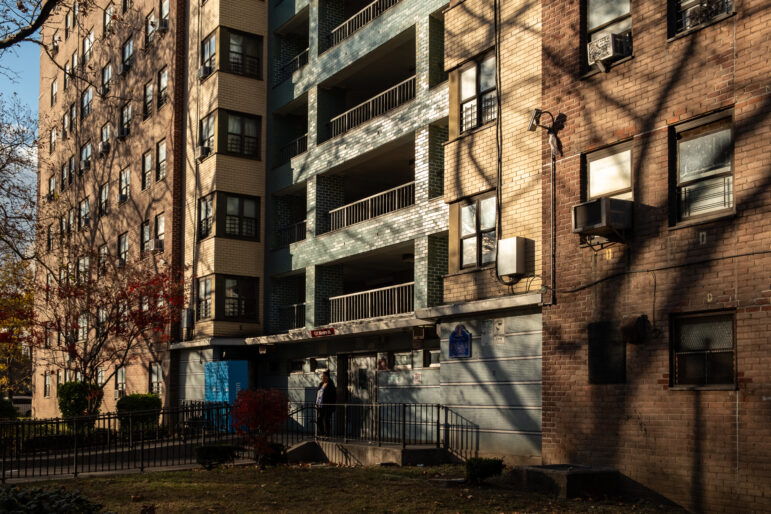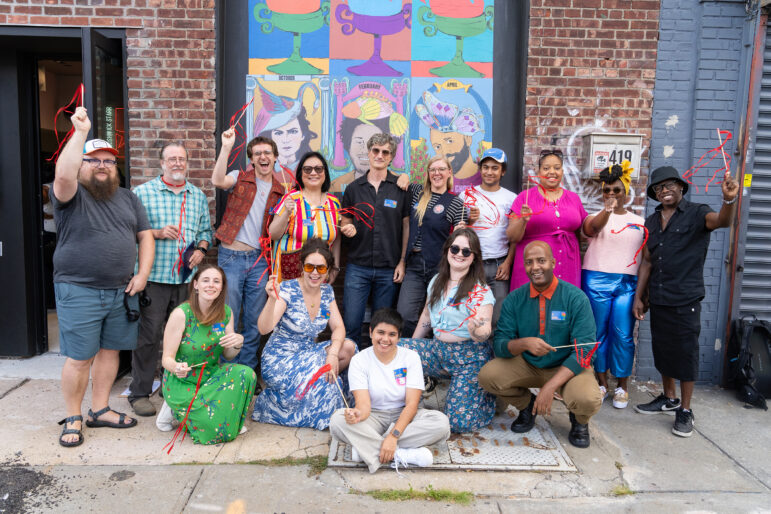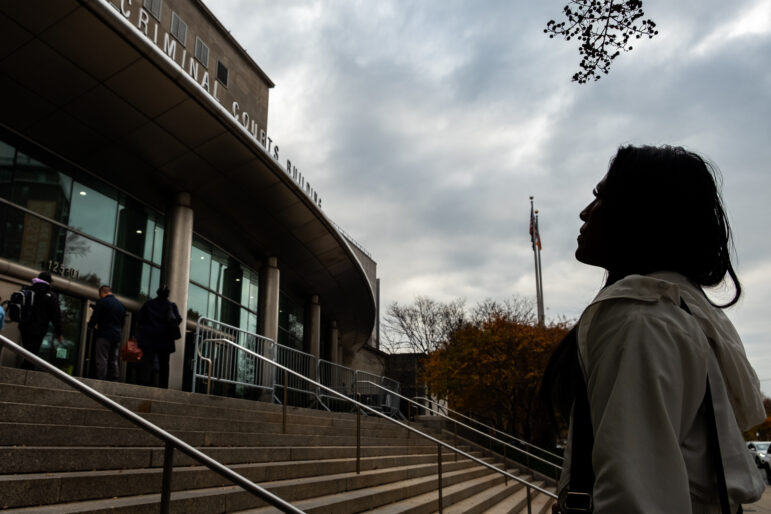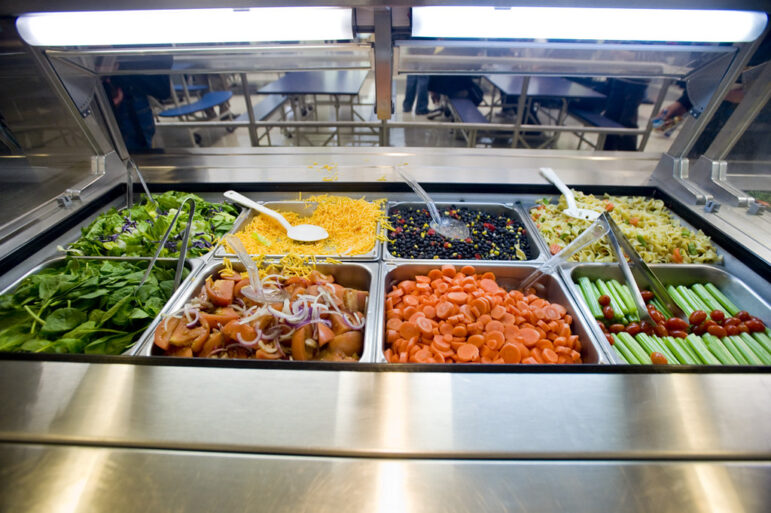New York City is changing the way it measures poverty among its residents. By the middle of next year, the city will replace the federal poverty measure—which has been used for almost 40 years—with new guidelines it is developing to get a better picture of who is living in poverty and how city initiatives affect those residents.
The city’s efforts are a prominent example of the move toward formulating alternative measures of poverty, both locally and nationally. Public officials and service providers are growing more and more frustrated that the federal poverty measure no longer accurately relates to the lives of low-income families. “It is time for an updated measure of poverty that reflects the real cost of living and working in modern American society,” says Fatima Goldman, executive director of the Federation of Protestant Welfare Agencies.
Government agencies are taking notice. This August, a Congressional hearing on this very issue yielded a strong consensus that the federal measure is broken and must be fixed. As a result, the Subcommittee on Income Security and Family Support of the House Committee on Ways and Means is considering introducing a bill “to get the discussion going” as early as next year, said subcommittee staff director Nick Gwyn. In New York state, Gov. Eliot Spitzer’s relatively new Economic Security Cabinet has shown interest in adopting some form of alternative measure as well.
New York City’s effort is led by Mark Levitan, director of poverty research at the Center for Economic Opportunity (CEO). The development of the new measure is largely a response to the federal measure’s inability to accurately assess the effectiveness of CEO programs, said Levitan. The city’s alternative measure is based on recommendations made by the National Research Council of the National Academy of Sciences (NAS) in 1995. “I think that there’s a fair consensus among poverty experts that this measure of poverty is far superior to the one we have now,” Levitan said.
The CEO will use the new poverty measure to help create two annual reports: the first an analysis of the well-being of three target groups (working poor adults, young adults ages 16 to 24 and children up to age 5), and the second a look at poverty throughout New York City. The goal of the reports, said Levitan, is to “create practical information for policy makers.” These new mechanisms for tracking outcomes and measuring program results will be at the heart of the CEO’s work. Other more well-known CEO initiatives include Opportunity NYC—the nation’s first “conditional cash transfer” program—and the city’s new child care tax credit.
The official poverty measure grew out of a series of studies conducted for the Social Security Administration in the 1960s by Mollie Orshansky, who worked for many years as a social researcher and analyst in the federal government. Rather than trying to calculate a complete budget for different family types, Orshansky based her guideline on Department of Agriculture data showing that the typical American family spent about one-third of its income on food. To determine the minimum income families needed to survive, she simply multiplied the average food budget by three; incomes under that fell below the poverty line. In 1969 the federal government adopted Orshansky’s method as the official poverty measure of the United States. Other than adjustments for inflation, it has not changed since. As Patricia Ruggles of the NAS testified before the subcommittee this summer, “No other major statistic produced by the federal government has been issued over so long a period of time without being re-benchmarked and having its methodology updated.”
Low-income New Yorkers feel the trickle-down effects of the guidelines’ inadequacies. “They most definitely need a new formula because what they’re doing is not working,” says Marilyn Bezear, 51, who lives in public housing in Harlem. She and her adult daughter get by on the $210 per week she clears from part-time office cleaning, but they don’t qualify for the health and nutrition supports she’d like. “They’re not living the life I’m living,” said Bezear, who has testified on poverty issues before Congress as part of her work with Community Voices Heard, a low-income advocacy organization.
~
Many government programs already implicitly recognize the limitations of the measure: the income limit for food stamps, for example, is set at 130 percent of the poverty guidelines. Similarly, in the recent debate over funding for the state children’s health insurance program (SCHIP), public officials such as Gov. Spitzer argued that income limits for eligibility should be set well above the poverty guidelines.
There are clearly “concerns that that poverty line simply doesn’t adequately reflect the amounts that families need in order to get by,” says Mark Greenberg, executive director of the task force on poverty at the Center for American Progress, a progressive think tank in Washington. Public opinion polls, too, consistently show that people think families need to earn at least twice as much as the federal poverty guidelines to meet their basic needs.
The primary criticism of the federal measure is that it fails to account for changing patterns of income and spending. “The distance between the poor and the economic mainstream has been growing over time,” said Levitan. While food costs once accounted for one-third of a family’s budget, families now typically spend one-seventh or one-eighth of their income on food. Similarly, national affluence has risen faster than the poverty measure: in the 1960s the poverty line fell at about half the median income, whereas today it is at less than 30 percent.
And while there is value to having a national standard, critics argue that an accurate poverty measure must account for regional differences in cost of living. A family of three in rural Mississippi might be able to subsist on less than $20,000 of pre-tax income per year, but that won’t cover basic needs in cities like New York. Also, the current measure ignores some expenses and income types. For example, antipoverty tools such as the Earned Income Tax Credit, food stamps and Medicaid—which can each be worth thousands of dollars per year—are not taken into account.
“We end up with a measure that’s not capturing the things that government is doing to improve the lives of low-income people. That’s kind of ridiculous,” said Levitan. The NAS formula addresses these concerns by taking into account the differences in poverty across population groups and over time. For example, NAS poverty thresholds are based on the actual costs of food, clothing, shelter and miscellaneous items in various geographic areas, and are updated on a yearly basis to reflect changing costs. Additionally, the NAS measure deducts certain expenses from income, such as taxes, child care and medical costs, but counts benefits like food stamps and tax credits as income. The recommendations also call for regular review of the poverty measure, to ensure that it continues to accurately reflect changes in government policy and standards of living.
Several groups in New York City other than the CEO are working on alternative measures and definitions of poverty. Although their methods differ, the different groups all think a paradigm shift is necessary to more effectively address poverty in New York City. Two alternative measures focus on the minimum income families in New York City need to meet their basic expenses: the “self-sufficiency standard,” developed for the Women’s Center for Education and Career Advancement (WCECA); and “basic needs budgets,” developed by the National Center for Children in Poverty (NCCP) at Columbia University’s Mailman School of Public Health.
These take into account families’ “comprehensive range of needs,” explained Merble Reagon, executive director of WCECA, and recognize the unique economic circumstances of living and working in New York City. The goal of these measures is to advance the discussion about poverty and to highlight the distance between the poverty level and financial stability.
Both the self-sufficiency standard and basic needs budget calculate the income necessary for different family types to meet their most basic level of expenses. They include costs for housing, child care, food, transportation, health care, taxes and miscellaneous expenses. “The emphasis is not on how poor people are, but on how close they are to being self-sufficient,” said Reagon. For example, a household in Queens with one adult, one preschooler and one school age child would have to make $54,961 just to cover basic expenses, according to the standard. The federal poverty level for the same family is $17,170.
Harlem resident Sandra Killett knows New York City’s special challenges firsthand. Now receiving a Section 8 subsidy and living in Harlem, in the past she rented a three-bedroom duplex in Atlanta for $675 a month. “You can’t even get a bathroom for $675 a month in New York,” said Killett, who supports herself and two children on a $28,000 salary. “I’m so glad it’s being done,” she said of the measurements’ reworking.
Walter Stafford, professor of urban planning and public policy at NYU’s Wagner School of Public Service, is currently creating a measure of poverty for New York City based on standards developed by the United Nations Development Programme (UNDP). The human development index, as the measure is called, rates countries on a scale according to health, knowledge and standard of living attainments. In the most recent rankings in 2006, Norway was ranked most developed of 177 countries and Niger least, while the U.S. was eighth.
The human development index for New York City will classify neighborhoods as high, medium or low development areas. The goal of the project is to take a more holistic approach to poverty. “People need a broader concept of poverty,” Stafford said, “Income is not the only variable.” People living in low development areas in New York City, such as Harlem or the South Bronx, not only generally have lower incomes, but their health, education and standard of living are lower, too. This “multi-dimensional poverty” is ignored by the federal poverty measure, Stafford said. He hopes the report, planned for release in the coming months, will inform the way government looks at poverty and makes funding decisions.
So is there a chance that the federal poverty measure will be adjusted in some way? Changes to federal programs generally are a long time coming, but the federal poverty measure poses some particularly daunting challenges for politicians and policy-makers.
“There is a disincentive for an administration to change how we measure poverty,” said Nancy Cauthen, deputy director of the NCCP – mostly because the number considered poor could change in unpopular ways. A 2005 U.S. Census Bureau report, for example, found that a relatively modest increase to the poverty threshold would increase the poverty rate by almost 3 percent. There are also many bureaucratic hurdles weighing against a change. Eligibility rules for many means-tested programs and funding formulas for federal aid to the states depend on the poverty measure. More people living in poverty would require more investment in anti-poverty programs. Also, even if inaccurate, the current poverty measure allows for easy comparison from year to year. It would take time to accumulate a similar level of historical data under a new measure.
New York City is not waiting to see what happens with the federal measure. According to Levitan, the first data should be available from the city’s alternative poverty measure in about six months. “I hope it will be informative, and I hope that the information will shape the conversation,” he said.








